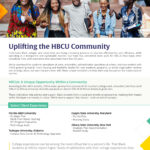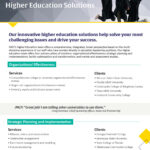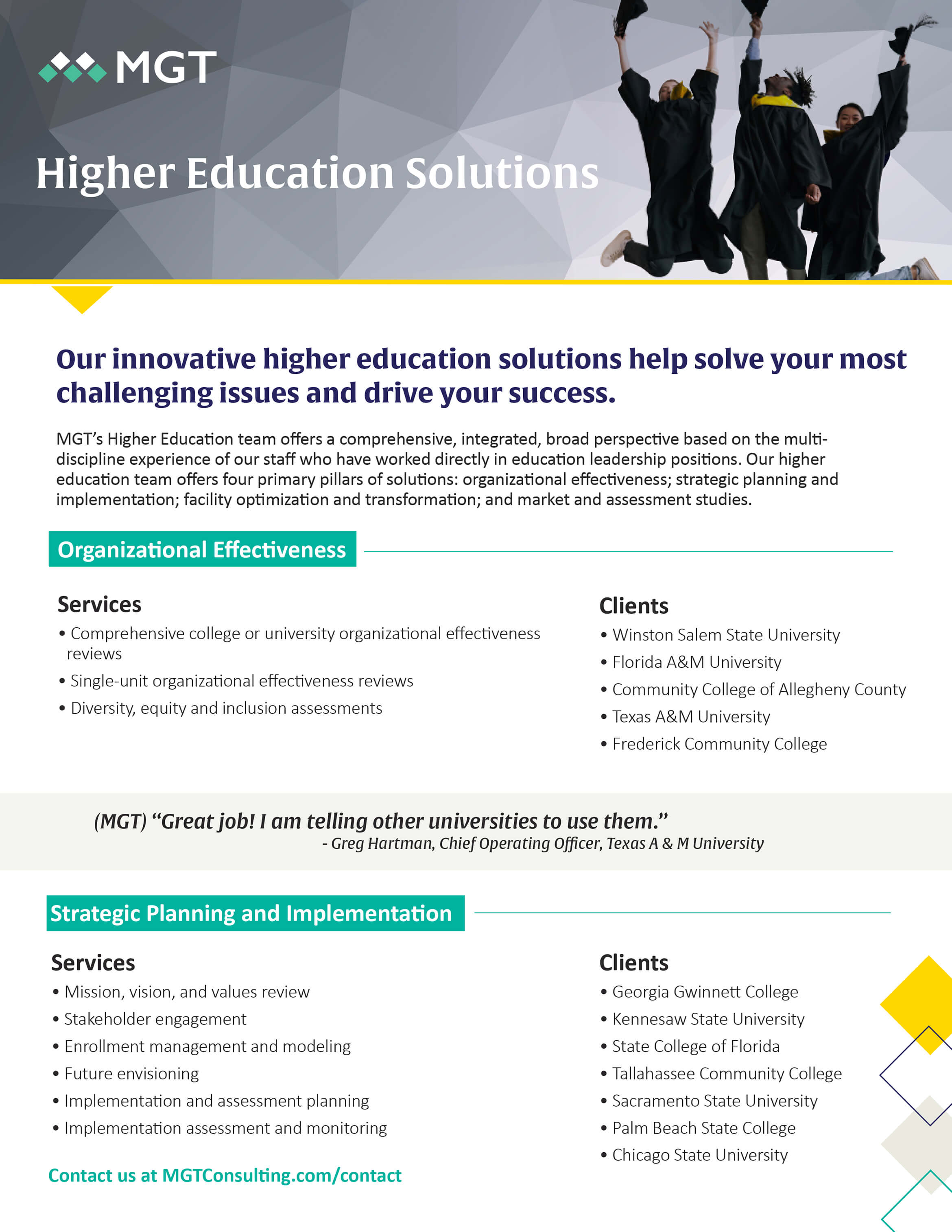The impact of declining enrollments, shifting values, and alternative opportunities are changing higher education in unprecedented ways. The negative impact is apparent through non-profit, for profit, and public colleges and universities closing, consolidating, or merging. Since 2016, 86 public and private colleges and universities have merged (38), consolidated (12), or closed (36) or are in the process of doing so. Connecticut (13) and Wisconsin (10) were at the top of the list with consolidations and mergers. [1] Further understanding these impacts on higher education will provide a context for ways for colleges and universities to thrive.
Declining Enrollments
College and university enrollments in the United States peaked at 21 million in the fall of 2010, shortly after the great recession. Fall 2019 enrollment is expected to be approximately 5% lower than the peak, indicating that higher education is still struggling to recover from the recession. Typically, during a recession, higher education enrollments spike as those laid off from employment seek new careers, complete degrees, or up-skill. Projections indicate enrollments will remain below or at the 2010 peak through 2028. [2] With an already tight labor market, many other economic and factors are negatively impacting future higher education enrollments such as an increase in retirees meaning more job openings, smaller generations than previous, and fewer people choosing to have children.
Higher education is typically impacted by a recession as enrollments tend to increase and states divest in higher education because funds are limited while other priorities take precedence. Also, as the population ages, Medicare and pensions will be the focus for state funding over higher education. Families will be challenged to pay for college as employment changes and higher costs of goods create tighter budgets. There will be less public support resulting in higher tuition which is also an issue for families.
Shifting Values
As technology through automation and artificial intelligence change the nature of jobs, employers seek candidates with more technological expertise and a range of well-developed employability skills. Employability skills focus on three areas: applied knowledge, effective relationships, and workplace skills that work together to form a framework encompassing nine skill areas. [3] This focus values short-term, less-expensive credentials, moving away from traditional, on-campus liberal arts educations. As a result, parents are questioning the return on investment for university and seeing more affordable options to help their children prepare for the workplace.
Alternative Opportunities for Learning
During this tight labor market, companies such as Amazon are investing in their employees by investing $700 million to train 100,000 employees at different levels for higher-skilled jobs by 2025 through the company’s Machine Learning University or Amazon Technical Academy. Employees can also participate in apprenticeships and earn Amazon Web Services cloud certification at a discount.
Another alternative learning opportunity is Coursera which designed a platform where anyone, anywhere can earn credentials from top universities and education providers. Over 1,700 companies use Coursera to up-skill their employees. Other alternative learning opportunities include Launch Academy, which offers a semester-long on-campus program for web developers [4], and General Assembly, an immersive program (on-campus and online) who partner with businesses investing in education for their employees. [5] University Ventures is another example of an organization re-imagining the future of higher education and creating new pathways from education to jobs in a more affordable and faster way. [6] The opportunities for a job seeker to find alternative methods to up-skill and stay competitive in the job market are ever-increasing.
Proactive Solutions
Whether your institution is faring well now, struggling to find the most effective pathway forward, or striving for future successes, solutions for thriving in this new environment include:
- Conduct a market demand analysis to determine new target populations and offer programs and courses in ways that meet the target population’s needs while addressing employer needs. As part of the market demand, include a retention plan that keeps current students engaged and meets market demand.
- Complete a financial and operational review and analysis to evaluate options and innovative strategies. Focus on enhancing return on investment for students and families. Also consider viability of options on capital investments like student housing, which can be key to addressing the latest trends in student homelessness.
- Review your cyber security program and make sure its robust. Cyber threats or hacks could cost an institution hundreds of thousands to fix. Preplanning is relatively inexpensive and a safeguard you can’t afford not to consider.
- Assess your faculty, staff and administrative performance. An organization review or staffing efficiency study could reveal redundancies and/or provide other insights into restructuring to save your organization significant costs.
- Evaluate program offerings to ensure graduates are developing the latest in demand skills and are prepared to compete for newly created opportunities.
Our higher education consulting team has a wealth of experience as former college and university administrators. They understand various aspects impacting a campus’ success and offers proven recommendations to leverage assets and reduce deficiencies to chart a course forward in this new higher education environment.
[1] A look at Trends in College and University Consolidation since 2016. EducationDive. https://www.educationdive.com/news/how-many-colleges-and-universities-have-closed-since-2016/539379/ (Accessed August 19, 2019).
[2] College Enrollment in the United States from 1965 to 2017 and projections up to 2028 for public and private colleges. Statista. https://www.statista.com/statistics/183995/us-college-enrollment-and-projections-in-public-and-private-institutions/ (Accessed August 19, 2019).
[3] Employability Skills. Perkins Collaborative Resource Network. http://cte.ed.gov/initiatives/employability-skills-framework (Accessed August 19, 2019).
[4] Launch Academy. https://launchacademy.com/ (Accessed August 19, 2019).
[5] General Assembly. https://generalassemb.ly/why-ga-is-worth-it (Accessed August 19, 2019).
[6] University Ventures. http://universityventures.com/about.php (Accessed August 19, 2019).










